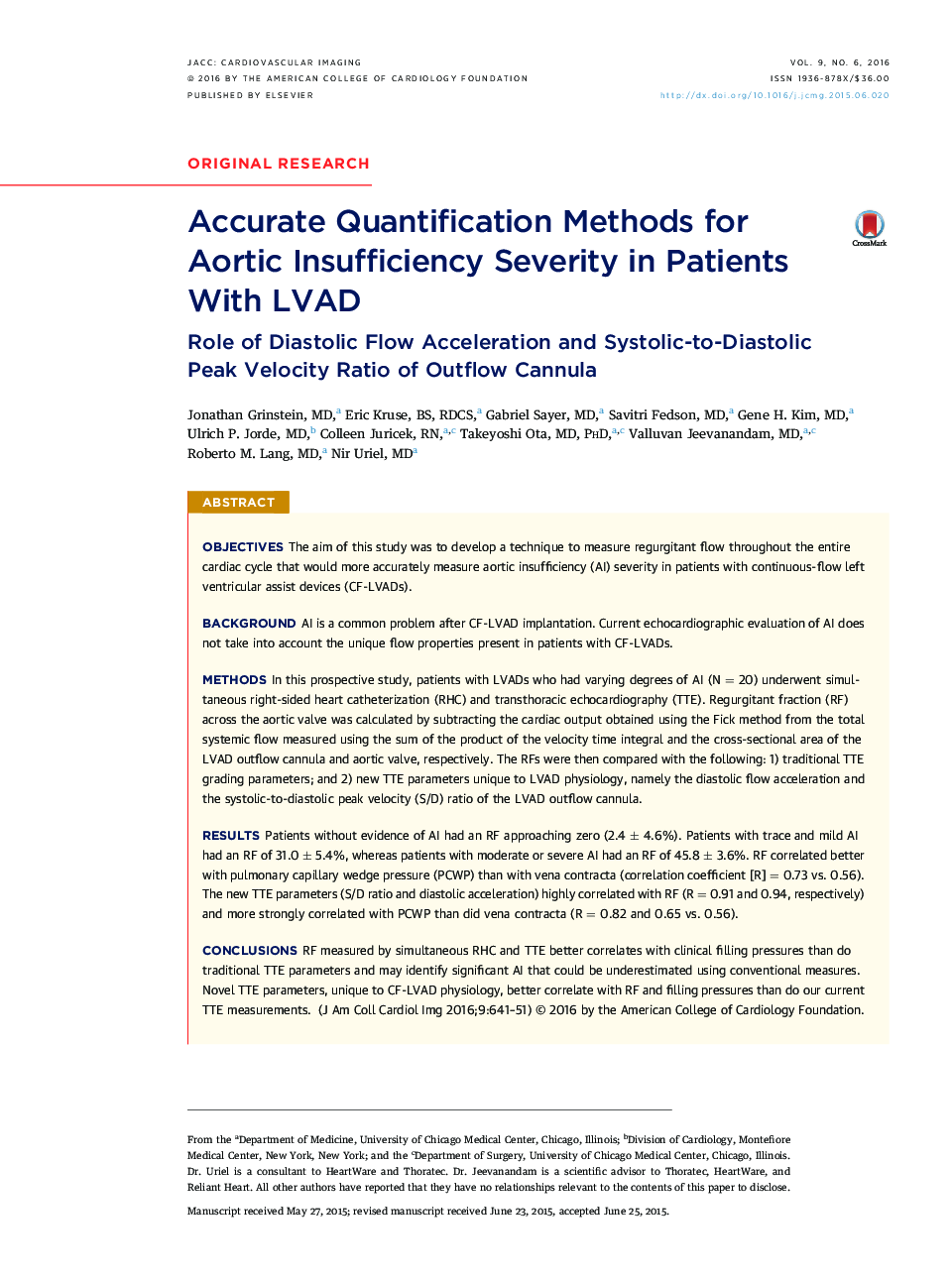| کد مقاله | کد نشریه | سال انتشار | مقاله انگلیسی | نسخه تمام متن |
|---|---|---|---|---|
| 2937667 | 1176893 | 2016 | 11 صفحه PDF | دانلود رایگان |

ObjectivesThe aim of this study was to develop a technique to measure regurgitant flow throughout the entire cardiac cycle that would more accurately measure aortic insufficiency (AI) severity in patients with continuous-flow left ventricular assist devices (CF-LVADs).BackgroundAI is a common problem after CF-LVAD implantation. Current echocardiographic evaluation of AI does not take into account the unique flow properties present in patients with CF-LVADs.MethodsIn this prospective study, patients with LVADs who had varying degrees of AI (N = 20) underwent simultaneous right-sided heart catheterization (RHC) and transthoracic echocardiography (TTE). Regurgitant fraction (RF) across the aortic valve was calculated by subtracting the cardiac output obtained using the Fick method from the total systemic flow measured using the sum of the product of the velocity time integral and the cross-sectional area of the LVAD outflow cannula and aortic valve, respectively. The RFs were then compared with the following: 1) traditional TTE grading parameters; and 2) new TTE parameters unique to LVAD physiology, namely the diastolic flow acceleration and the systolic-to-diastolic peak velocity (S/D) ratio of the LVAD outflow cannula.ResultsPatients without evidence of AI had an RF approaching zero (2.4 ± 4.6%). Patients with trace and mild AI had an RF of 31.0 ± 5.4%, whereas patients with moderate or severe AI had an RF of 45.8 ± 3.6%. RF correlated better with pulmonary capillary wedge pressure (PCWP) than with vena contracta (correlation coefficient [R] = 0.73 vs. 0.56). The new TTE parameters (S/D ratio and diastolic acceleration) highly correlated with RF (R = 0.91 and 0.94, respectively) and more strongly correlated with PCWP than did vena contracta (R = 0.82 and 0.65 vs. 0.56).ConclusionsRF measured by simultaneous RHC and TTE better correlates with clinical filling pressures than do traditional TTE parameters and may identify significant AI that could be underestimated using conventional measures. Novel TTE parameters, unique to CF-LVAD physiology, better correlate with RF and filling pressures than do our current TTE measurements.
Journal: JACC: Cardiovascular Imaging - Volume 9, Issue 6, June 2016, Pages 641–651